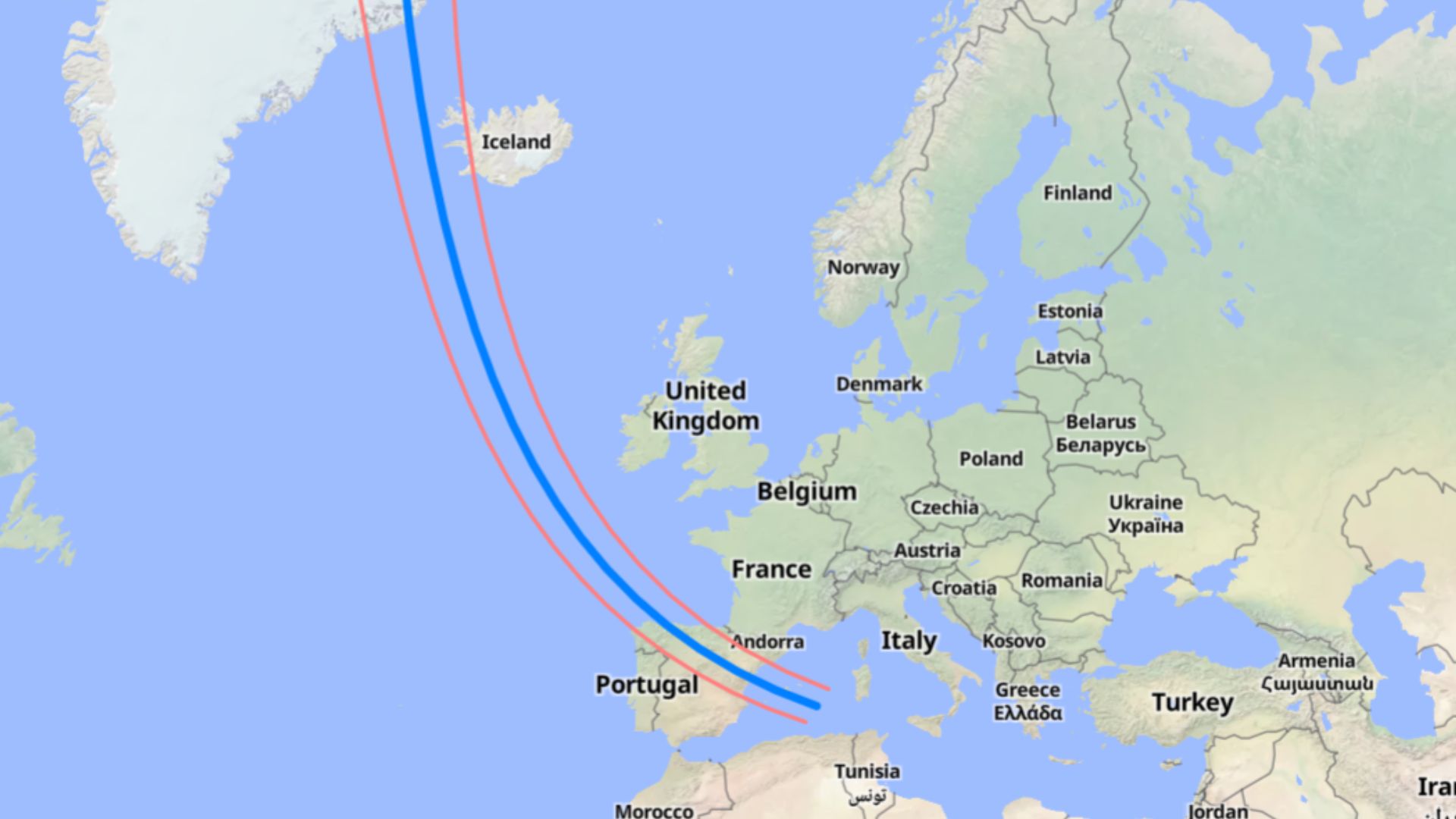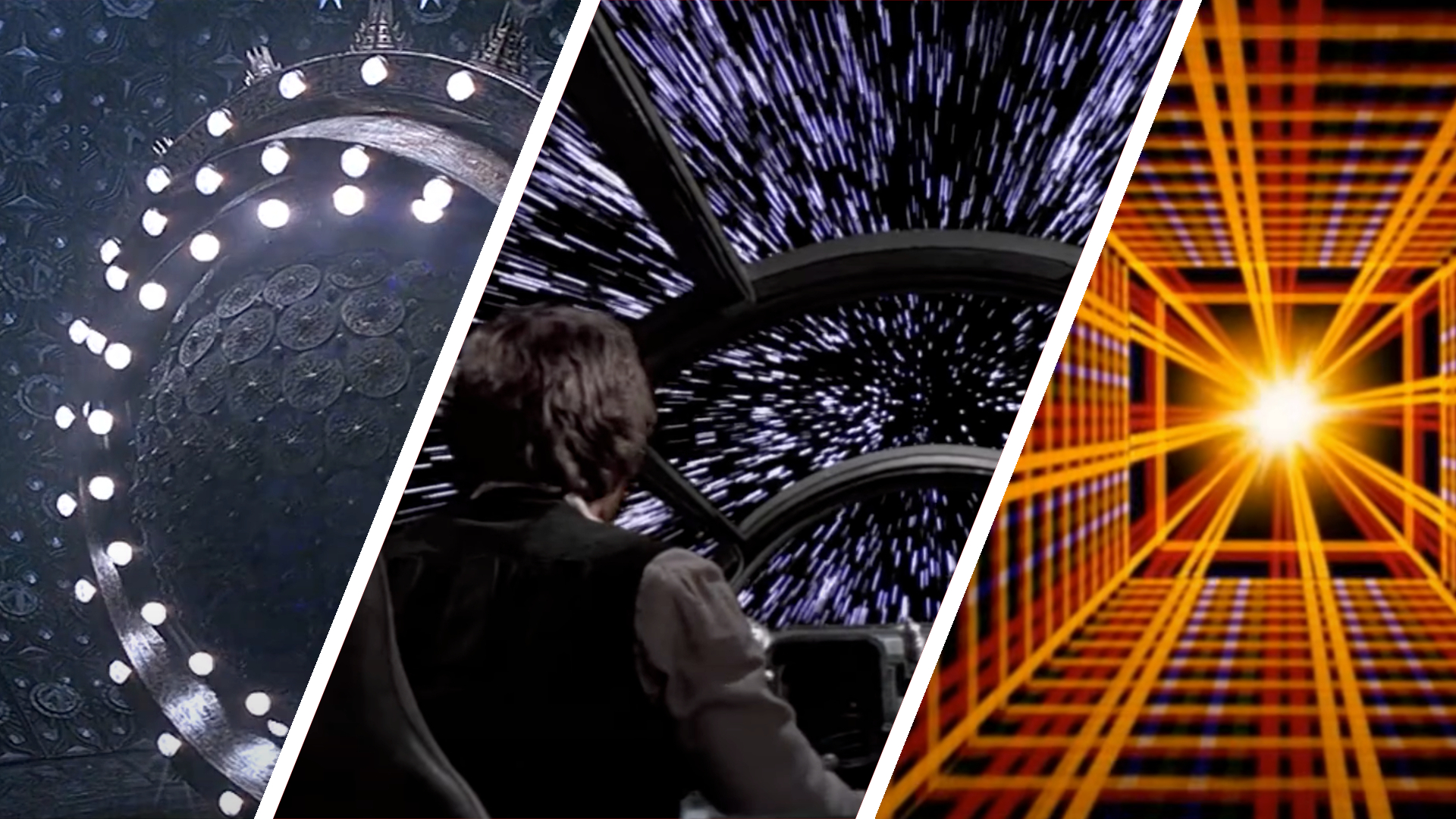Eclipse 2026: The next total solar eclipse will be Europe's 1st in 27 years
The next total solar eclipse will occur on Aug. 12, 2026.

It's been a long time since a total solar eclipse passed through Europe, but on Aug. 12, 2026, totality will come to the extreme northwest and southwest of the continent.
Visible in Greenland, western Iceland and northern Spain, the 2026 total solar eclipse will bring a maximum of 2 minutes, 18 seconds of totality the day before the peak of the annual Perseid meteor shower.
However, this solar eclipse will be about weather and sight lines, as it will occur over potentially cloudy regions and will be relatively low in the sky. At its highest point, the eclipsed sun will be just 26 degrees above the horizon.
Related: What's the difference between a total solar eclipse and an annular solar eclipse?
What's special about the Aug. 12, 2026, total solar eclipse?

In Iceland — in the auroral zone — the sun won't set until midnight, but the sky will get dark enough in the middle of the night for any faint auroras to become visible. In rural Spain, the skies will get much darker, making it the perfect destination to enjoy the peak night of the Perseid meteor shower, the strongest meteor shower of the year in the Northern Hemisphere, the night after the eclipse.
Path of totality




The 182-mile-wide (293 kilometers) moon's shadow will take around 96 minutes to cross the planet. Touching down in Russia, it will pass across Greenland, touch western Iceland, cross the Atlantic Ocean and cover northern Spain, departing just east of the Balearic Islands.
Cruise ships will either visit Scoresby Sund in Greenland or catch the longest possible totality just west of Iceland during a circumnavigation of the island nation. The country's capital and largest city, Reykjavik, will be a hive of activity for this eclipse, though it will pay to be mobile, with the Reykjanes Peninsula and the Snæfellsnes Peninsula both potential viewing regions.
Spain is a risky viewing location for different reasons. The eclipse will arrive on the country's northwest coast very close to sunset, so it will be important to be somewhere with a clear view low to the western horizon.
"Some parts of Spain have high mountains that can prevent us from seeing the sun during totality, so it is very important to select the location carefully," Oscar Martín Mesonero, an eclipse chaser and astronomer at Startrails in Salamanca, Spain, told Space.com. "On the east coast, the sun will be only 4 degrees high, so any building or small mountain could ruin the view — and traffic there will be very bad."
From Mallorca, the eclipse will occur almost on the horizon, and sight lines will be tricky.
"Mallorca is a touristy place, and prices will be very high," Mesonero said. "There are few roads and lots of mountains, so you will have to choose the site very carefully — any small obstacle could cause you to miss the eclipse — but if you succeed, you will have a spectacular view of the eclipsed sun over the sea with a golden corona!"
Ibiza, Formentera and Menorca may be easier and more affordable options, but totality there will be much shorter.
Where and when can I see the August 2026 total solar eclipse?
Here are some of the places eclipse chasers will gather for the total solar eclipse on Aug. 12, 2026:
| Location | Totality duration | What time? | Sun height |
|---|---|---|---|
| Scoresby Sund, Greenland | 1 minute, 46 seconds | 4:35 p.m. CGST | 24 degrees above west |
| Reykjavik, Iceland | 1 minute, 1 second | 5:48 p.m. GMT | 25 degrees above west |
| Snæfellsjökull National Park, Iceland | 2 minutes, 10 seconds | 5:45 p.m. GMT | 25 degrees above west |
| Gijón, Spain | 1 minute, 46 seconds | 8:26 p.m. CEST | 10 degrees above west-northwest |
| A Coruña, Spain | 1 minute, 15 seconds | 8:27 p.m. CEST | 12 degrees above west-northwest |
| Palencia | 1 minute, 42 seconds | 8:29 p.m. CEST | 9 degrees above west-northwest |
| Burgos, Spain | 1 minute, 44 seconds | 8:28 p.m. CEST | 8 degrees above west-northwest |
| Segovia, Spain | 54 seconds | 8:31 p.m. CEST | 8 degrees above west-northwest |
| Sigüenza, Spain | 1 minute, 38 seconds | 8:30 p.m. CEST | 7 degrees above west-northwest |
| Mallorca, Balearic Islands, Spain | 1 minute, 36 seconds | 8:31 p.m. CEST | 2.7 degrees above west-northwest |
If you're looking for some inspiration for planning an eclipse 2026 trip check out our roundup of the best cruises for the total solar eclipse 2026.
What will the weather be like for the Aug. 12, 2026, eclipse?
This is an eclipse with a dilemma. "In a way, Iceland is better because the sun will be higher in the sky," Graham Jones, an astrophysicist and science communicator at Time and Date, told Space.com. "By the time it reaches Spain, it's very low, which can be problematic." However, Iceland has a much higher chance of clouds. "It's a question of higher altitude and more clouds versus lower altitude and less clouds," Jones said.
The coasts of Greenland and Iceland and the north coast of Spain are the most likely to have clouds. There are some potential bright spots — Scoresby Sund in Greenland, according to Eclipsophile — while the cooling of the land during the partial phases could cause convective clouds to dissipate across the path.
To maximize the chance of clear skies, head for north-central Spain; the Castilla-La Mancha and Castilla y León regions are least likely to have clouds (but the most likely to have crowds). "It is possible that due to the day's heat, clouds form that affect the afternoon at the time of the eclipse," Mesonero said. "Having a vehicle to move around will be very important."
However, many eclipse chasers don't mind taking risks. "For people who have seen a lot of eclipses but never seen Iceland, a 40% chance of seeing it is a reasonable risk," said Victoria Sahami, owner and founder of Sirius Travel. "It was a no-brainer to put together an eclipse tour to Iceland — it's also where the longest totality is — but the best chance of clear skies will be in the Mediterranean off Mallorca."
Where to see the partial solar eclipse on Aug. 12, 2026
A partial solar eclipse will be seen across Europe and some other Northern Hemisphere locations. Here's what will be seen from major cities and destinations in the partial eclipse zone:
| Location | % of sun's disk covered |
|---|---|
| New York City | 9% |
| St. John's, Newfoundland, Canada | 53% |
| Nuuk, Greenland | 79% |
| Oslo, Norway | 83% |
| Berlin, Germany | 84% |
| London, U.K. | 91% |
| Paris, France | 92% |
| Tangier, Morocco | 92% |
| Dublin, Ireland | 94% |
| Lisbon, Portugal | 94% |
| Nice, France | 95% |
| Madrid, Spain | 99.96% |
| Barcelona, Spain | 99.82% |
After August 2026, when is the next total solar eclipse?
After the total solar eclipse on Aug. 12, 2026, these are the dates and locations for the next total solar eclipses:
- Aug. 2, 2027: Spain, Gibraltar, Morocco, Algeria, Tunisia, Libya, Egypt, Sudan, Saudi Arabia, Yemen, Somalia, British Indian Ocean Territory
- July 22, 2028: Christmas Island, Cocos Islands, Australia, New Zealand
- Nov. 25, 2030: Namibia, Botswana, South Africa, Lesotho and Australia
- Nov. 14, 2031: Pacific Ocean (totality), Panama (annularity)
- March 30, 2033: Russia, U.S. (Alaska)
- March 20, 2034: Benin, Nigeria, Cameroon, Chad, Sudan, Egypt, Saudi Arabia, Kuwait, Iran, Afghanistan, Pakistan, India and China
- Sept. 2, 2035: China, North Korea, Japan
Additional resources
Want to look further ahead? You can find a concise summary of solar eclipses out to 2030 on NASA's eclipse website. Read more about solar and lunar eclipses on EclipseWise.com, a website dedicated to predictions of eclipses, and find beautiful maps on eclipse cartographer Michael Zeiler's GreatAmericanEclipse.com and interactive Google Maps on Xavier Jubier's eclipse website. You can find climate and weather predictions by meteorologist Jay Anderson on eclipsophile.com.
Bibliography
Anderson, J. (February 2024). Total Solar Eclipse
2026 August 12. Retrieved March 4, 2024 from https://eclipsophile.com/tse2026/
Bakich, M. and Zeiler, M. (2022). Atlas Of Solar Eclipses 2020-2045.
https://www.greatamericaneclipse.com/books/atlas-of-solar-eclipses-2020-to-2045
Espenak, F. Solar Eclipse Prime Page: Total Solar Eclipse of 2026 August 12. Retrieved March 4, 2024 from: https://eclipsewise.com/solar/SEprime/2001-2100/SE2026Aug12Tprime.html
Jubier, X. (n.d.). Solar eclipses: Interactive Google Maps. Retrieved March 4, 2024 from http://xjubier.free.fr/en/site_pages/SolarEclipsesGoogleMaps.html
Time and Date. (n.d.). August 12 2026 Total Solar Eclipse. Retrieved March 5, 2024 from https://www.timeanddate.com/eclipse/solar/2026-august-12
Join our Space Forums to keep talking space on the latest missions, night sky and more! And if you have a news tip, correction or comment, let us know at: community@space.com.
Get the Space.com Newsletter
Breaking space news, the latest updates on rocket launches, skywatching events and more!

Jamie is an experienced science, technology and travel journalist and stargazer who writes about exploring the night sky, solar and lunar eclipses, moon-gazing, astro-travel, astronomy and space exploration. He is the editor of WhenIsTheNextEclipse.com and author of A Stargazing Program For Beginners, and is a senior contributor at Forbes. His special skill is turning tech-babble into plain English.










